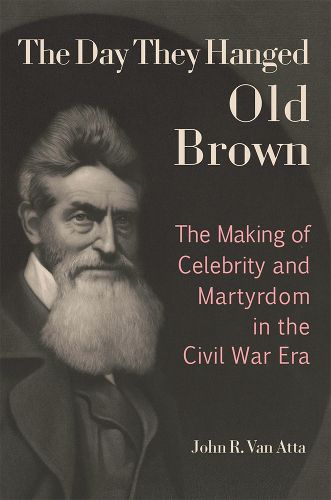Readings Newsletter
Become a Readings Member to make your shopping experience even easier.
Sign in or sign up for free!
You’re not far away from qualifying for FREE standard shipping within Australia
You’ve qualified for FREE standard shipping within Australia
The cart is loading…






Abolitionist, fanatic, terrorist, freedom fighter, alleged murderer--all of those labels fit John Brown. Yet he also qualified as a mid-nineteenth-century celebrity. Reserved only for a few, celebrity in Brown's time was, in historian Carolyn Eastman's words, a quality "of being well known, an attribute, a degree of popularity and fame--the state of being celebrated by others," as Brown certainly was. Brown's lifespan covered most of the period between the Revolution and the Civil War, a time of the still-early beginnings of the United States. Only then had his kind of "celebrity" started to matter. From different economic and moral perspectives, politically aware Americans clashed over different visions for the future of the country. At that time, any disruptive figure might be taken as a barometer of the progress or the decline of the republic. A function of the widely varying newspapers and magazines of that day, celebrity offered Americans an angle of vision, happily or not, as to who they were or were becoming or believed themselves to be--as if by a mirror reflection.
In The Day They Hanged Old Brown, John Van Atta examines the creation of celebrity in John Brown's time and how it differed from modern day perceptions. Yet, as applicable as the concept of celebrity is in this case, the story of Brown's notoriety represents far more. To his admirers, Brown was not merely a celebrity; he was a hero and, after his sacrificial death, a martyr. Not all celebrities rise to such levels. This book traces the meaning of heroism and martyrdom--as well as the opposite side of that coin, villainy--and suggests that John Brown's story and legacy helped to redefine these concepts for many Americans during the era of the Civil War, before modern historians began to deliberate him.
$9.00 standard shipping within Australia
FREE standard shipping within Australia for orders over $100.00
Express & International shipping calculated at checkout
Abolitionist, fanatic, terrorist, freedom fighter, alleged murderer--all of those labels fit John Brown. Yet he also qualified as a mid-nineteenth-century celebrity. Reserved only for a few, celebrity in Brown's time was, in historian Carolyn Eastman's words, a quality "of being well known, an attribute, a degree of popularity and fame--the state of being celebrated by others," as Brown certainly was. Brown's lifespan covered most of the period between the Revolution and the Civil War, a time of the still-early beginnings of the United States. Only then had his kind of "celebrity" started to matter. From different economic and moral perspectives, politically aware Americans clashed over different visions for the future of the country. At that time, any disruptive figure might be taken as a barometer of the progress or the decline of the republic. A function of the widely varying newspapers and magazines of that day, celebrity offered Americans an angle of vision, happily or not, as to who they were or were becoming or believed themselves to be--as if by a mirror reflection.
In The Day They Hanged Old Brown, John Van Atta examines the creation of celebrity in John Brown's time and how it differed from modern day perceptions. Yet, as applicable as the concept of celebrity is in this case, the story of Brown's notoriety represents far more. To his admirers, Brown was not merely a celebrity; he was a hero and, after his sacrificial death, a martyr. Not all celebrities rise to such levels. This book traces the meaning of heroism and martyrdom--as well as the opposite side of that coin, villainy--and suggests that John Brown's story and legacy helped to redefine these concepts for many Americans during the era of the Civil War, before modern historians began to deliberate him.